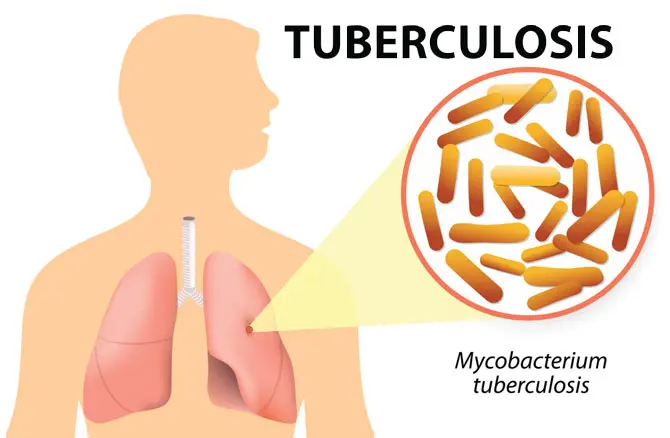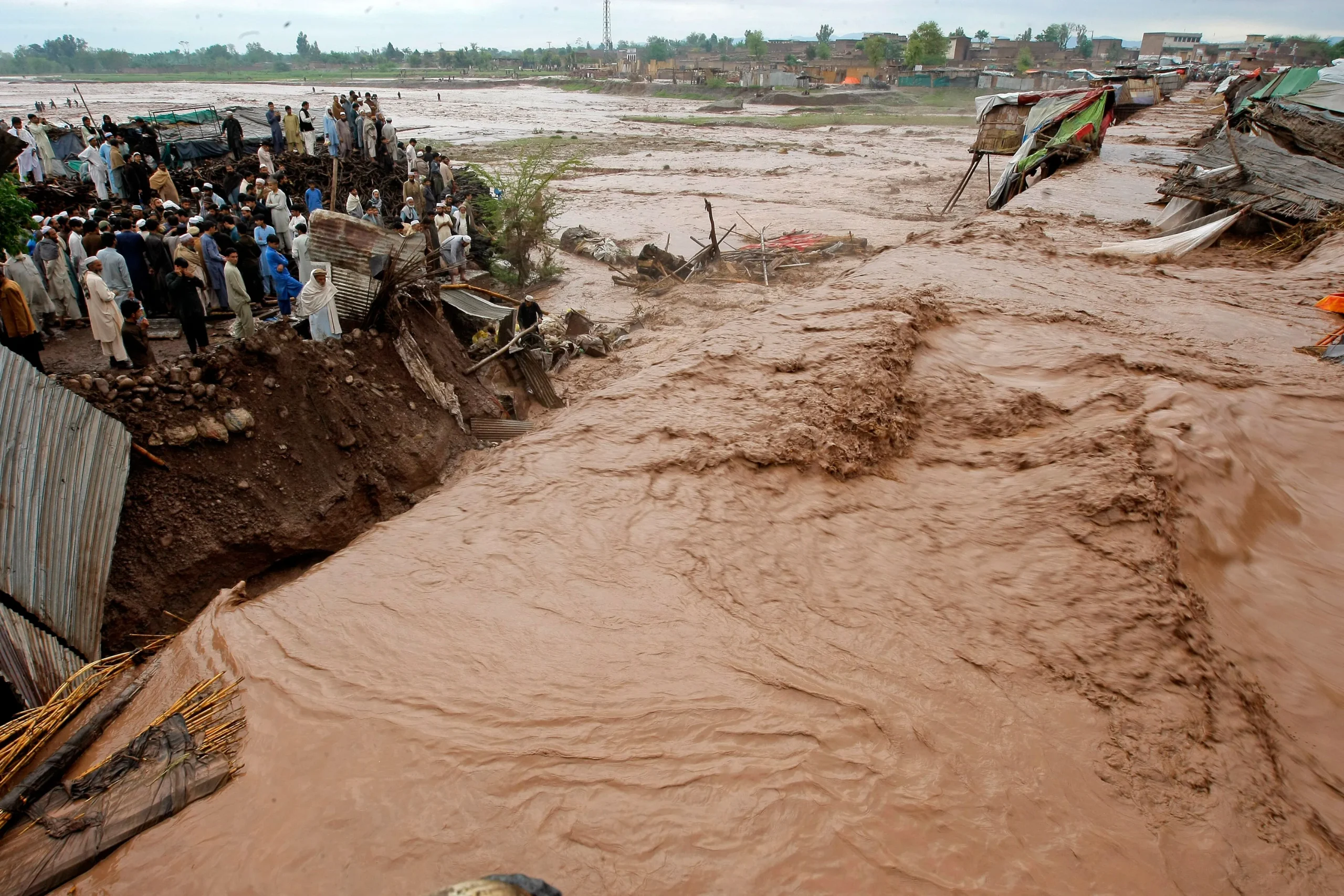World Tuberculosis (TB) Day is celebrated annually in many countries as an opportunity to raise awareness about this deadly disease, which has plagued humanity for centuries. Pakistan is no exception, with various activities being organized across the country to commemorate the day. However, the stark reality is that Pakistan is among the top five countries with the highest burden of TB in the world, accounting for a staggering number of new cases each year.
In contrast to wealthy nations, where TB incidence is relatively low, Pakistan reports alarming figures with a rate of 263 cases per 100,000 population. This translates into a whopping 580,000 people who develop TB annually, according to public health expert Dr. G.N. Kazi. The situation is dire, with more than half of the patients in busy ID clinics like The Indus Hospital in Karachi being TB-infected, while other medical institutions are also reporting increasing numbers of cases in the community.
The challenges posed by TB in Pakistan are numerous and complex. One major factor is the lack of access to quality healthcare and diagnostic facilities, especially in rural and remote areas. Furthermore, poverty, malnutrition, and overcrowding exacerbate the spread of the disease, making it more difficult to control. The rise of drug-resistant strains of TB has also posed a significant threat to public health, with limited treatment options available to combat these strains.
The situation demands a coordinated and concerted effort from all stakeholders, including the government, healthcare providers, civil society, and the general public. The government needs to allocate sufficient resources and develop effective policies to address the crisis, while healthcare providers must ensure that quality diagnostic and treatment services are accessible to all. Civil society and the media can play a crucial role in raising awareness and advocating for the rights of TB patients, who often face stigma and discrimination.
In addition to addressing the immediate challenges posed by TB, there is also a need to invest in research and development to develop more effective diagnostic tools and treatment options. The current diagnostic methods, such as sputum smear microscopy, are unreliable and often fail to detect the disease in its early stages. Similarly, the treatment options available are limited, with lengthy and often ineffective treatment regimens.
Despite the challenges, there have been some positive developments in recent years. The government has launched various initiatives to improve access to healthcare and diagnostic facilities, and civil society organizations are also working tirelessly to raise awareness about TB and support patients. There is also an urgent need to increase public-private partnerships to develop innovative solutions to tackle the disease.
As we reflect on World TB Day, it is important to remember that TB is not just a medical issue, but a social and economic one as well. The disease has far-reaching consequences for individuals, families, and communities, and it is only through a collaborative and multidisciplinary approach that we can hope to defeat it. By investing in healthcare, research, and education, we can create a healthier, more equitable, and sustainable future for all.
Last month, countries inflicted with tuberculosis celebrated World Tuberculosis (TB) Day, and Pakistan was no exception. The day was marked with great enthusiasm through seminars, awareness walks, talk shows, and press releases. Unfortunately, Pakistan’s burden of infectious diseases (ID) remains sky-high, with tuberculosis being a major contributor. According to public health specialist Dr G.N. Kazi, Pakistan ranks fifth in the world in terms of the burden of TB and is one of eight nations accounting for two-thirds of new cases of the disease.
TB is caused by a bacterium called Mycobacterium tuberculosis (MTB) and has been around for thousands of years, with DNA analysis of Egyptian mummies showing evidence of the disease. Despite significant scientific research on the cause, diagnosis, treatment, and prevention of the disease, its spread remains uncontrollable in low- and middle-income countries like Pakistan. MTB is like a moving target and continues to challenge our health system. Anti-TB drugs introduced in the 1950s were effective for several decades, but misuse by patients and inexperienced physicians have led to drug resistance, rendering conventional treatment useless. The new drugs are effective, but they come with their own set of problems, being toxic and very expensive.
MTB is a tenacious germ, and it can remain suspended in the air for many hours unless blown away by the wind. It can survive for days even in extreme temperatures or humidity. An infected person can spray a few thousand to a few million bacteria when coughing, sneezing, or speaking, and the chances of acquiring the infection depend on the bacterial load and duration of exposure. The smaller the living space, the greater the chances of occupants inhaling more bacteria.
It is not just the medical community that needs to take responsibility for controlling the spread of TB; the government and the public must also take action. The government should take measures to improve public health infrastructure, including establishing more hospitals and clinics that specialize in infectious diseases. The public should be educated on the causes, symptoms, and preventive measures of TB. They should be made aware that the disease is curable and that it is essential to complete the full course of treatment, as non-compliance contributes to drug resistance.
Preventive measures such as wearing masks, practicing good hygiene, and maintaining adequate ventilation in living spaces can also help in preventing the spread of TB. TB screening and treatment should be made more accessible and affordable, particularly for marginalized communities who are at higher risk of contracting the disease.
While developed countries report an incidence rate of less than 10 cases per 100,000 population, Pakistan’s alarming figure is 263 per 100,000, which translates to 580,000 people developing TB annually, as stated by public health specialist Dr. G.N. Kazi. At The Indus Hospital in Karachi, where a busy infectious diseases clinic treats patients, more than half of the patients are infected with TB, and the rest suffer from a variety of other infectious diseases.
TB is caused by a bacterium known as Mycobacterium tuberculosis (MTB) that was found in DNA analysis of Egyptian mummies from 5,000 years ago. Despite extensive scientific research on the cause, diagnosis, treatment, and prevention of TB, the disease remains relentless in low- and middle-income countries and worryingly uncontrollable in Pakistan’s population. MTB is like a moving target, similar to other bacteria. The anti-TB drugs introduced in the 1950s were effective for several decades, but due to inexperienced physicians’ prescriptions and non-compliant patients, drug resistance has created a dreaded situation where the patient no longer responds to conventional treatment. The new drugs are effective but toxic and expensive.
The TB bacterium is a tenacious germ that can remain suspended in the air for many hours, survive for days even in extreme temperature or humidity, and is a formidable foe. When an infected person coughs, sneezes, or speaks, the number of bacteria sprayed varies from a few thousand to a few million, which exposes others to the disease. The risk of infection depends on the bacterial load and the duration of exposure. Living spaces that are smaller have a higher chance of occupants inhaling more bacteria.
Brave doctors attempt to save the failing organs, but death claims 200 victims a day. The good news is that statistically, only one in three exposed persons will become infected. Among them, one-third will reveal symptoms of the disease within two years, one-third will inhale the bacteria but remain dormant in the body until their immunity declines, and the bacteria may revive even decades later. Unfortunately, the remaining one-third of infected persons may never manifest TB.
The bad news is that Pakistan’s substandard living conditions, malnutrition, and poor hygiene, especially among women experiencing numerous pregnancies, make the country ripe for rampant escalation of TB. The country’s sinking economy has plunged it deeper into the morass of untreatable diseases. Sadly, children exposed to family members are the worst affected, and if undiagnosed or treated late, they may die or survive with damaged lungs.
To combat TB, Pakistan’s government must prioritize health care and allocate the necessary resources to fight the disease. The focus must be on diagnosis, treatment, and prevention. Moreover, community education programs are necessary to promote hygiene, living space improvement, and personal and environmental cleanliness. The public must be made aware of the dangers of not adhering to drug prescriptions and not completing the full course of antibiotics.
Tuberculosis, the wily bacterial fiend, has a peculiar knack for invading every nook and cranny of the human body. Once it sets up shop in the lungs, it can stealthily spread its tentacles via the bloodstream and lymphatic channels to virtually any organ, be it the glands in the chest or neck, the skin, bones, joints, kidneys, brain, eyes, gut, or even the heart. Like a termite infestation, it gnaws away at its host, leaving a trail of destruction in its wake.
Diagnosing tuberculosis becomes a herculean task when it infects the deeper organs. While the lab can easily confirm the presence of TB in the lungs by testing sputum, the same is not true for other organs. Early diagnosis and correct management can lead to a complete cure, but if the diagnosis is delayed or incorrect treatment is administered, the damage to the organs can be irreparable. Moreover, the clever TB germs can outsmart their adversaries by mutating and developing resistance to standard drugs, turning drug-resistant TB into a medical nightmare. The toxic and expensive drugs required to treat it may need to be administered for several months, and even then, a third of drug-resistant TB patients may remain incurable.
Tuberculosis is not just a disease but also a social condition, one that reflects the poor state of our living conditions. Clean air, water, and food are the basic requirements for good health, yet these elements are woefully scarce in our society. The majority of people affected by TB, who live in urban slums, are usually malnourished. Sunlight is a rarity in tiny, windowless flats, and the air is rife with pollutants such as dust and smoke. In cramped living quarters, where 10 or more people share a room, the likelihood of inhaling TB bacteria increases exponentially. Unfortunately, the Pakistani population is disproportionately affected by other diseases such as diabetes, hepatitis, AIDS, and kidney failure, as well as lung damage caused by air pollution or cigarette smoke, which make them more susceptible to TB. Adding to this perilous mix are quacks posing as doctors who wreak havoc with misdiagnoses and inappropriate treatments.
The spread of TB is aided and abetted by Pakistan’s sinking economy, which has plunged us deeper into the abyss of untreatable diseases. While brave doctors are fighting to salvage failing organs, they are confronted with a relentless enemy that claims the lives of 200 victims daily. However, the statistical silver lining is that only one in three exposed persons will contract the disease, and of those who do, one-third will remain asymptomatic for years, while the remaining one-third may never show symptoms at all.
This epidemic, however, is not just a health crisis but a socio-economic one as well. TB exacerbates poverty by draining meager resources from households already struggling to make ends meet. Children, in particular, are the hardest hit when infected by family members. Without early diagnosis and proper treatment, they may suffer lifelong lung damage or worse. The need of the hour is to recognize that TB is a complex problem requiring a multi-dimensional solution that takes into account not only medical interventions but also social and economic reforms. Unless we tackle the root causes of this disease, it will continue to haunt us like a sinister specter, sapping our strength and claiming countless lives.
In Pakistan, tuberculosis (TB) is a ticking time bomb, with devastating consequences. The unique aspect of TB is that the bacteria can wreak havoc on any organ of the body. Starting with the lungs, the bacteria can slowly spread through the blood and lymphatic system, much like woodworm, causing damage to any part of the body, including the glands in the neck or chest, the skin, bones, joints, kidneys, brain, eyes, gut, and heart.
While laboratory testing of sputum can easily diagnose lung TB, it becomes more challenging to diagnose TB when a deep organ is affected. Early diagnosis and correct management can control and cure the disease, but if left untreated, the damage can be irreparable. Moreover, if the treatment is incorrect or erratic, the clever bacteria can mutate and develop resistance to standard drugs. Drug-resistant TB is the physician’s and patient’s nightmare as toxic and expensive drugs must then be prescribed for several months, and even then, a third of the drug-resistant patients may never be cured.
TB is not only a unique ID but also a social condition that highlights the lack of basic requisites for good health, including clean air, food, and water. Unfortunately, Pakistan’s population is deprived of these necessities, particularly the urban slum-dwellers who are generally undernourished. The sunlight is blocked within tiny, windowless flats, and the air is polluted with dust and smoke, leading to various health problems, including TB. Additionally, the Pakistani population has a disproportionately large burden of diseases such as diabetes, hepatitis, AIDS, kidney failure, and damaged lung structures from polluted air or cigarette smoke, making them more susceptible to TB. To make matters worse, charlatans posing as doctors exacerbate the situation with incorrect diagnoses and drugs.
Although the government has launched the National TB Programme, which aims to improve TB awareness, provide diagnostics, capacity building, and timely provision of effective anti-TB drugs, the situation remains bleak. Every day, patients suffering from TB are brought to hospitals in critical condition, with failing organs and imminent death. Even brave doctors can only do so much to salvage these organs, with death overtaking 200 victims daily.
The current scenario will remain irreversible until overcrowding in improperly ventilated homes, workplaces, schools, and madressahs is addressed. An undernourished person with depleted protein reserves cannot be expected to fight infections, making poverty the root cause of TB. Unless poverty is eradicated, every day in Pakistan will be TB day.
In conclusion, the TB epidemic in Pakistan is a ticking time bomb that requires immediate attention. The disease’s unique nature and drug resistance make it a formidable foe, requiring early diagnosis, correct management, and proper living conditions. Poverty is the root cause of TB in Pakistan, and eradicating it is the only long-term solution to the epidemic. Unless drastic action is taken, every day will be TB day in Pakistan, with death and misery being the only outcomes.
Read more:

















